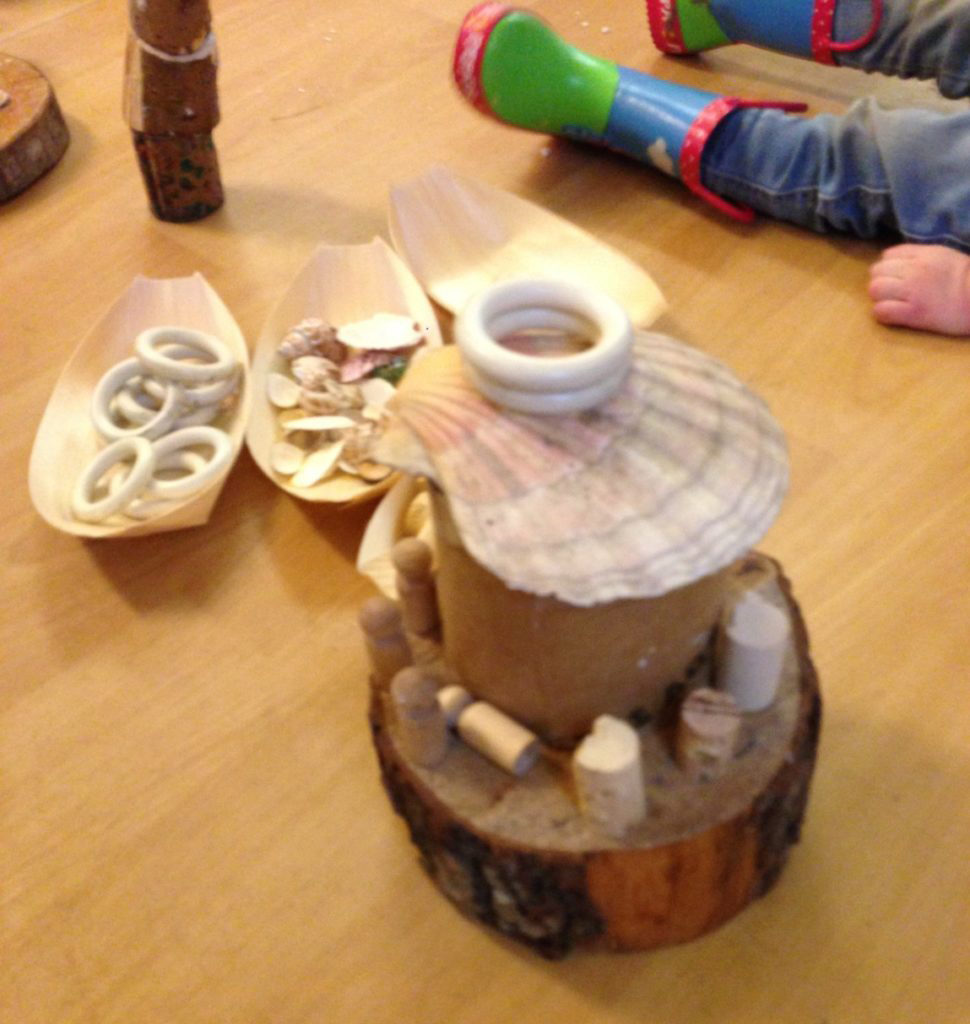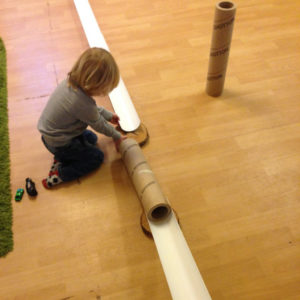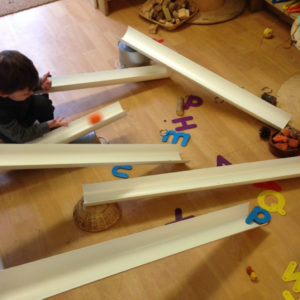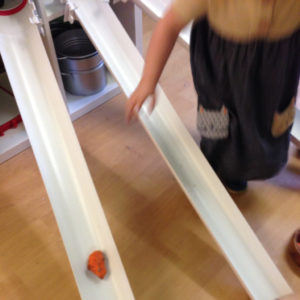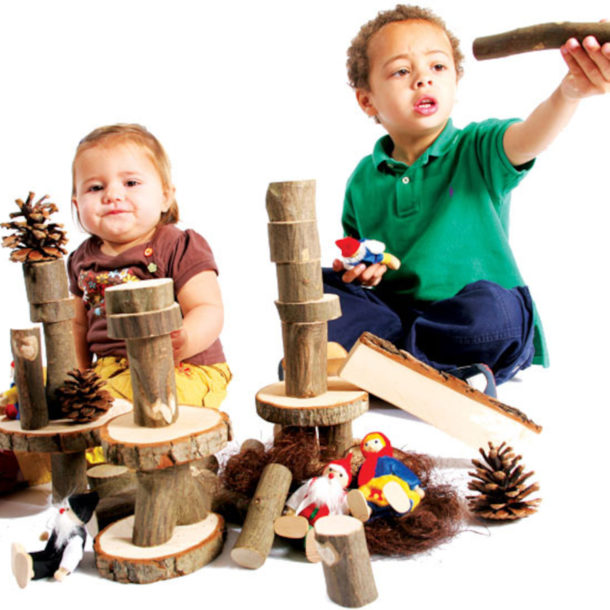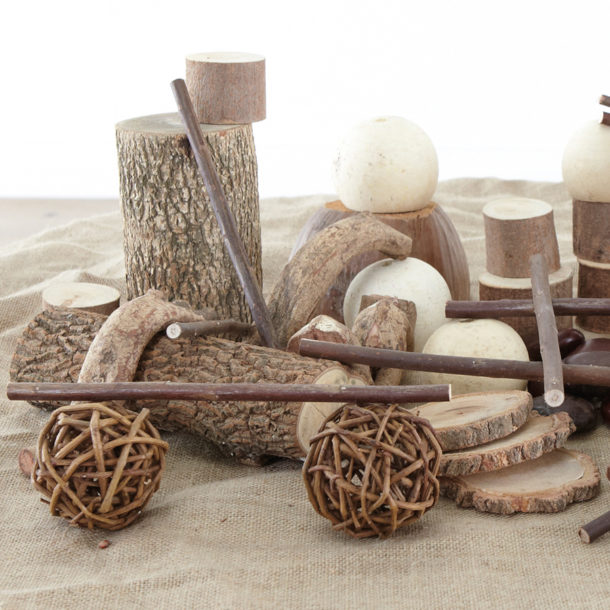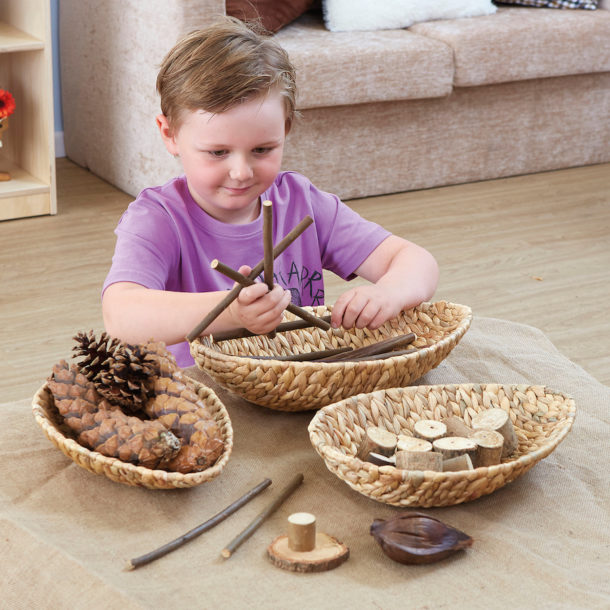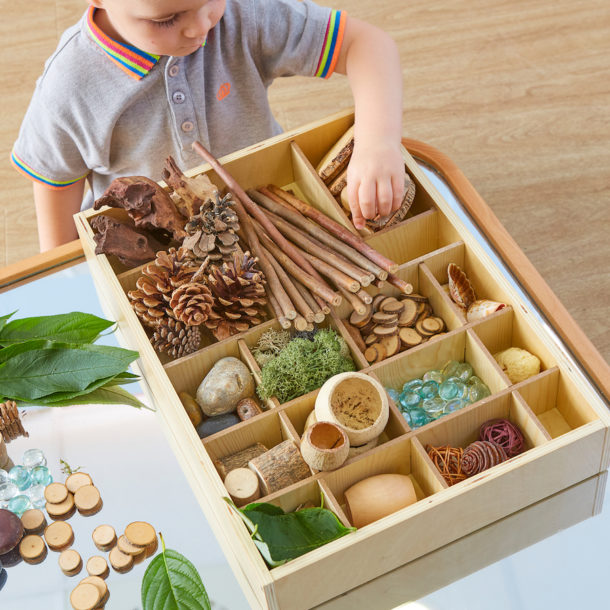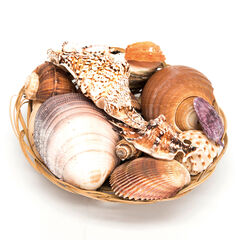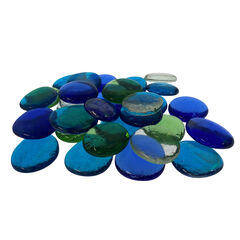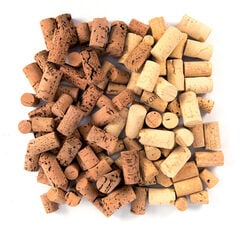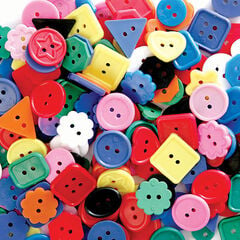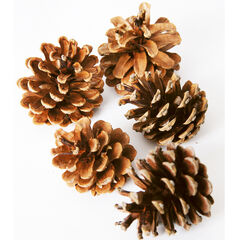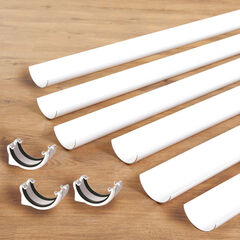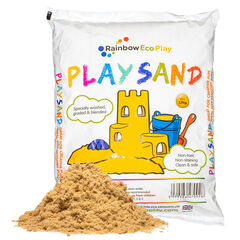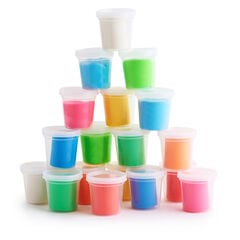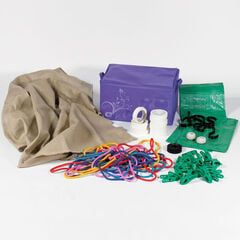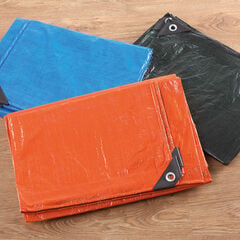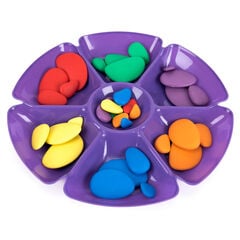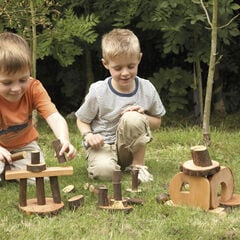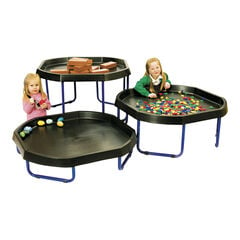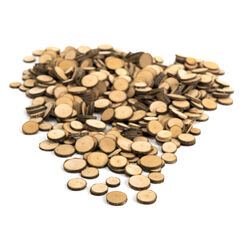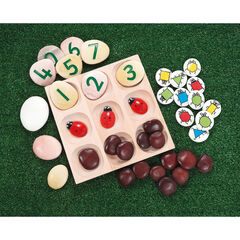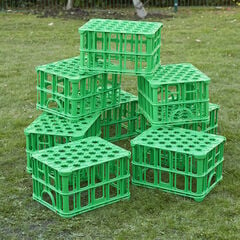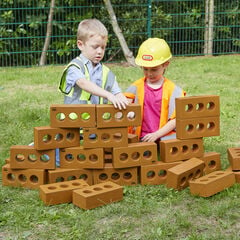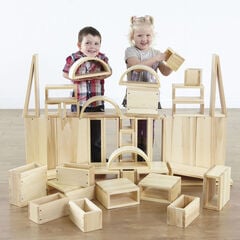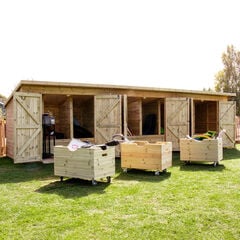Loose parts are materials and resources that have no pre-planned use; they can be natural or synthetic, they can be moved, combined with other resources, lined up, deconstructed and constructed again. You don’t need to go out and buy anything fancy, but instead allow children to use the continuous provision in a flexible way, with the space and time needed for them to play, explore and be creative.
My indoor area has an abundance of loose parts gathered into wicker baskets, trinket trays and jars. These include:
- Shells
- Stones
- Wooden rings
- Glass beads
- Corks
- Bottle tops
- Buttons
- Bangles
- Pine cones
- Lids
- Tubes
- Containers
- Trays
As well as, a number of larger items which include:
- Pipes
- Guttering
- Cable reels
- Wooden slices
- Boxes
- Tubes
All of these items can be moved wherever the children choose, they can also be freely added to water, sand and playdough.
The benefits of providing these items is their ability to be anything the children want them to be. I have seen buttons used in the role play area, being cooked in a pan and poured onto plates. I have seen tubes turn into castles and a cardboard box used as a spaceship – the possibilities are endless!
And, with this flexibility, the children can play with and explore items; they can actively learn whilst being creative and thinking critically. They learn lifelong skills such as teamwork, problem solving, resilience and negotiation. Most importantly children have the confidence to try new things without the fear of failure. Loose parts have no right or wrong way of being used and as such there is no failure when it comes to making their creations.
The adult’s role during loose parts play is important; you need to be an observer, mediator and facilitator, offering up comments that will support the children’s play rather than taking over and doing it for them. For example, if you were asked to build a den you would know exactly what to do and it would be built in 2 minutes flat! But, when children build a den, they need to work out what they will use as a roof and the size needed. They will have to compare items, try items out, perhaps they will need to attach two pieces of tarpaulin. In which case, they will need to work out how to fix them together (Glue? Sellotape? Clips?). After that, they need to decided how to attach them to the posts, what height they need to be attached at, how they will reach that height. Once they have decided upon, possibly a cable reel; they need to move it; to work as a team; and need to communicate!
You can see how, easily, building a den could last all morning and how many skills are needed to build it. This is in no way a definitive list of learning that takes place, however, it is an example of how a simple activity using loose parts can combine every area of learning without an adult at all.
Personal, social and emotional development – Sharing resources and helping each other to carry objects.
Communication and Language – Talking through their ideas and negotiating how to go about building the den.
Physical development – Carrying heavy objects and using tools such as pegs.
Maths development – Working out correct sizes and shapes needed.
Literacy development – Drawing a plan or creating a sign.
Understanding the world – Working out how objects work and how they can be combined.
Expressive art and design – Deciding upon materials and a design for their den.
In my experience communication is an area of development that stands out during play with loose parts, not only through the need to communicate, due to teamwork and negotiation, but through the children’s ability to storytell. I observed one little boy creating a spaceship after he had read about them in a book. He said, “This is my spaceship…whoosh!” Another little boy joined him, “3, 2, 1, LIFT OFF! He’s going to the moon”. “Yes, he’s going to find cheese.” “And aliens”. “Scary, scary aliens!” And so they continued their story, using large metal pans as space helmets!
Whatever loose parts you add to your environment, just remember it’s not about what the children do with them but about the learning that takes place!
With thanks to Laura England – Little Miss Early Years – an early years teacher, enthusiast and blogger for this wonderful insight into loose part play.
View our loose parts, tinker trays, sorting trays and natural resources over on our website
Read our article on the appeal of tinker trays for loose parts play – by Little Miss Early Years here.
Learn how to play the natural way and the benefits of natural resources in our popular article here.



